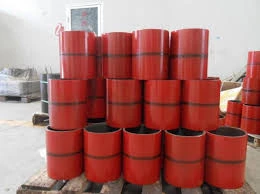- Afrikaans
- Albanian
- Amharic
- Arabic
- Armenian
- Azerbaijani
- Basque
- Belarusian
- Bengali
- Bosnian
- Bulgarian
- Catalan
- Cebuano
- Corsican
- Croatian
- Czech
- Danish
- Dutch
- English
- Esperanto
- Estonian
- Finnish
- French
- Frisian
- Galician
- Georgian
- German
- Greek
- Gujarati
- Haitian Creole
- hausa
- hawaiian
- Hebrew
- Hindi
- Miao
- Hungarian
- Icelandic
- igbo
- Indonesian
- irish
- Italian
- Japanese
- Javanese
- Kannada
- kazakh
- Khmer
- Rwandese
- Korean
- Kurdish
- Kyrgyz
- Lao
- Latin
- Latvian
- Lithuanian
- Luxembourgish
- Macedonian
- Malgashi
- Malay
- Malayalam
- Maltese
- Maori
- Marathi
- Mongolian
- Myanmar
- Nepali
- Norwegian
- Norwegian
- Occitan
- Pashto
- Persian
- Polish
- Portuguese
- Punjabi
- Romanian
- Russian
- Samoan
- Scottish Gaelic
- Serbian
- Sesotho
- Shona
- Sindhi
- Sinhala
- Slovak
- Slovenian
- Somali
- Spanish
- Sundanese
- Swahili
- Swedish
- Tagalog
- Tajik
- Tamil
- Tatar
- Telugu
- Thai
- Turkish
- Turkmen
- Ukrainian
- Urdu
- Uighur
- Uzbek
- Vietnamese
- Welsh
- Bantu
- Yiddish
- Yoruba
- Zulu
pipe threader
The Essential Guide to Pipe Threaders Tools for Precision and Efficiency
Pipe threaders are indispensable tools in plumbing, construction, and various manufacturing sectors. They are designed to cut threads into pipes, enabling them to be joined securely with fittings and other pipes. This article aims to provide a comprehensive overview of pipe threaders, detailing their types, features, and applications, along with some essential tips for effective use.
Understanding Pipe Threaders
At their core, pipe threaders are machines or tools that create a helical ridge on the outer surface of a pipe, known as threading. This threading ensures a tight and secure joint between pipes and fittings, preventing leaks and enhancing the overall integrity of plumbing systems. Threading is crucial for both rigid metal pipes, like those made from steel or iron, and flexible materials, including plastic piping.
Types of Pipe Threaders
Pipe threaders typically fall into two main categories manual and power-operated.
1. Manual Pipe Threaders These are often used for smaller jobs and are favored for their portability and ease of use. Manual threaders require physical effort to cut the threads, making them suitable for quick repairs or work in confined spaces. They come with a die head that fits onto the pipe, allowing the user to turn the handle to cut the threads. While they are economical and effective for small-scale applications, manual threaders can be labor-intensive, particularly when working with larger pipes.
2. Power Pipe Threaders These electric or hydraulic models are engineered for larger tasks and increased productivity. Power threaders operate much faster and are preferred for heavy-duty applications, such as in industrial settings or large construction sites. They come equipped with various attachments that can accommodate different pipe sizes and materials. Electric pipe threaders are widely appreciated for their speed, precision, and ability to produce consistent threads.
Key Features to Consider
When selecting a pipe threader, there are several important features to consider
- Pipe Size Compatibility Ensure the threader can handle the range of pipe sizes you work with, from small diameters for residential plumbing to larger sizes for commercial applications.
pipe threader

- Ease of Use Look for user-friendly designs with ergonomic handles and intuitive controls, especially for manual threaders.
- Durability and Build Quality Select robust materials that can withstand the rigors of frequent use. High-quality steel construction is often preferred for both manual and power threaders.
- Portability Depending on your application, the weight and portability of the tool may be significant. Manual threaders are typically lighter, while some power threaders are designed for transport on construction sites.
Tips for Effective Use
To maximize the efficiency and lifespan of your pipe threader, consider the following tips
- Proper Lubrication Always lubricate the pipe before threading. This reduces friction, ensures cleaner cuts, and extends the life of the dies.
- Maintain the Tools Regularly check and maintain your threader. Keep the dies sharp and replace any worn components to ensure optimal performance.
- Practice Safety Wear appropriate safety gear, including gloves and eye protection, when operating pipe threaders, especially power models, to mitigate the risk of injury.
Conclusion
Pipe threaders are essential tools that enhance the efficiency of plumbing and construction tasks. Whether you choose a manual or power-operated model, understanding their functionality, features, and proper usage will ensure you achieve reliable and professional results. As you embark on your next project, investing in a quality pipe threader could be one of the best decisions to ensure effective and secure pipe connections.
-
Tubing Pup Joints: Essential Components for Oil and Gas OperationsNewsJul.10,2025
-
Pup Joints: Essential Components for Reliable Drilling OperationsNewsJul.10,2025
-
Pipe Couplings: Connecting Your World EfficientlyNewsJul.10,2025
-
Mastering Oilfield Operations with Quality Tubing and CasingNewsJul.10,2025
-
High-Quality Casing Couplings for Every NeedNewsJul.10,2025
-
Boost Your Drilling Efficiency with Premium Crossover Tools & Seating NipplesNewsJul.10,2025







